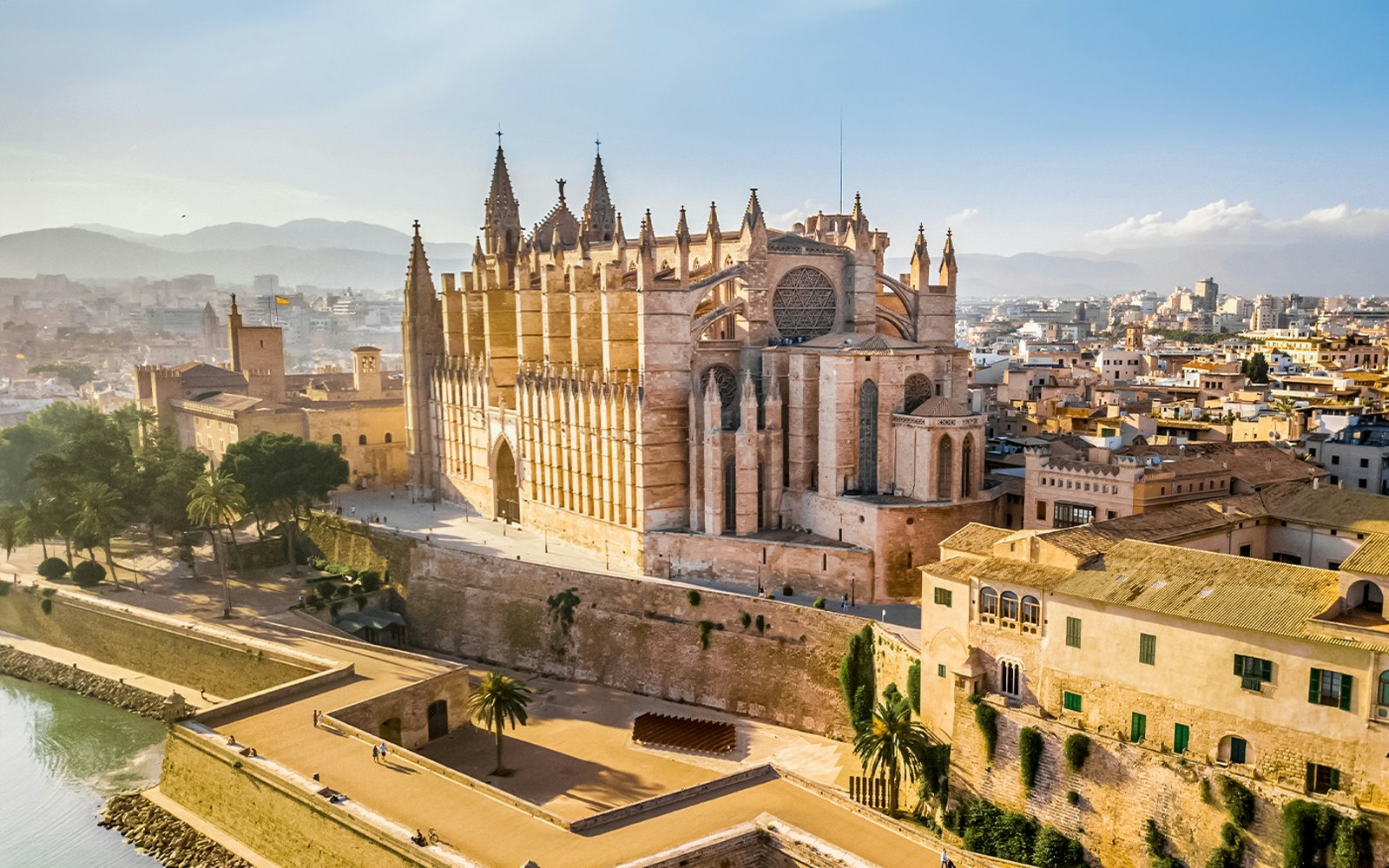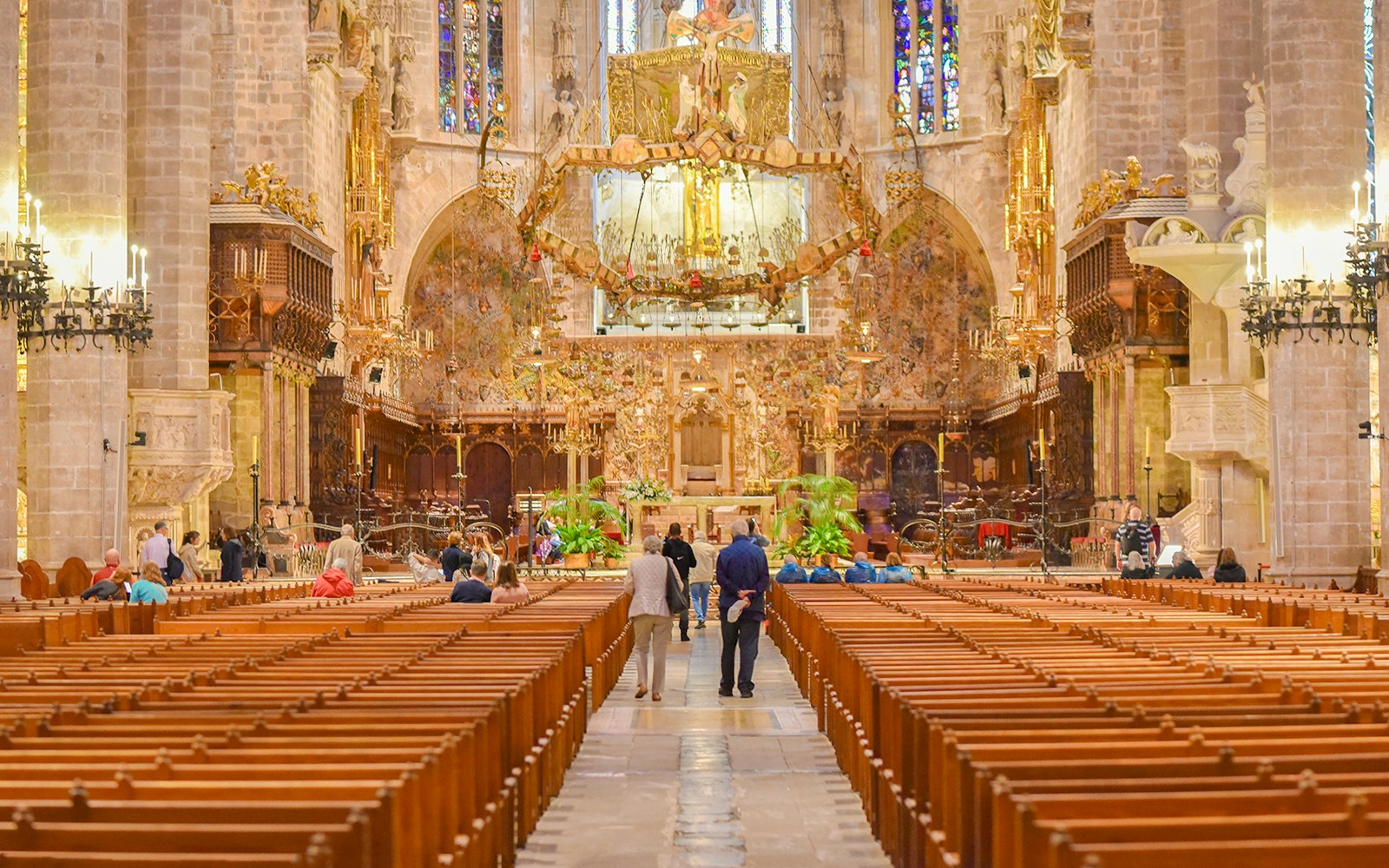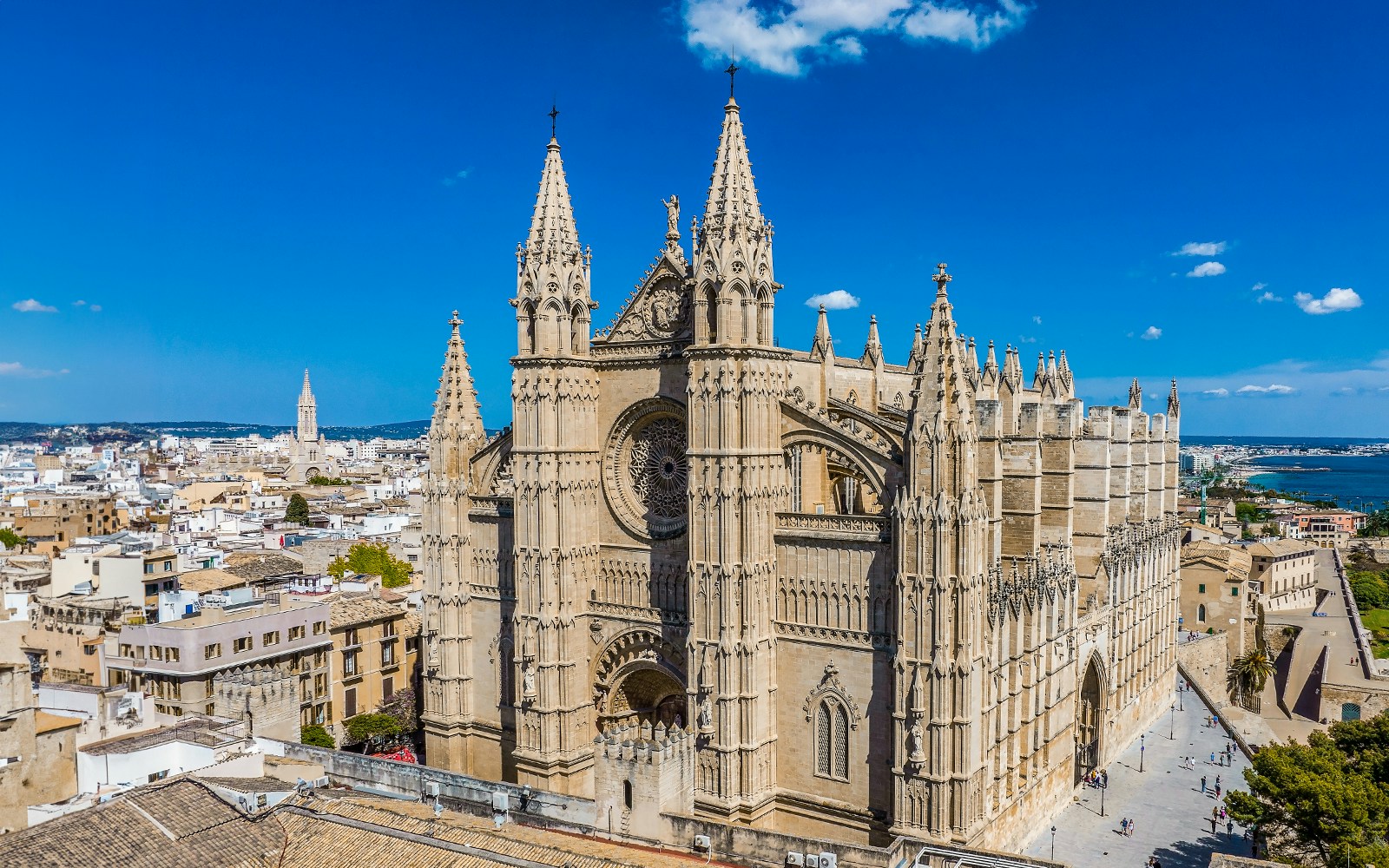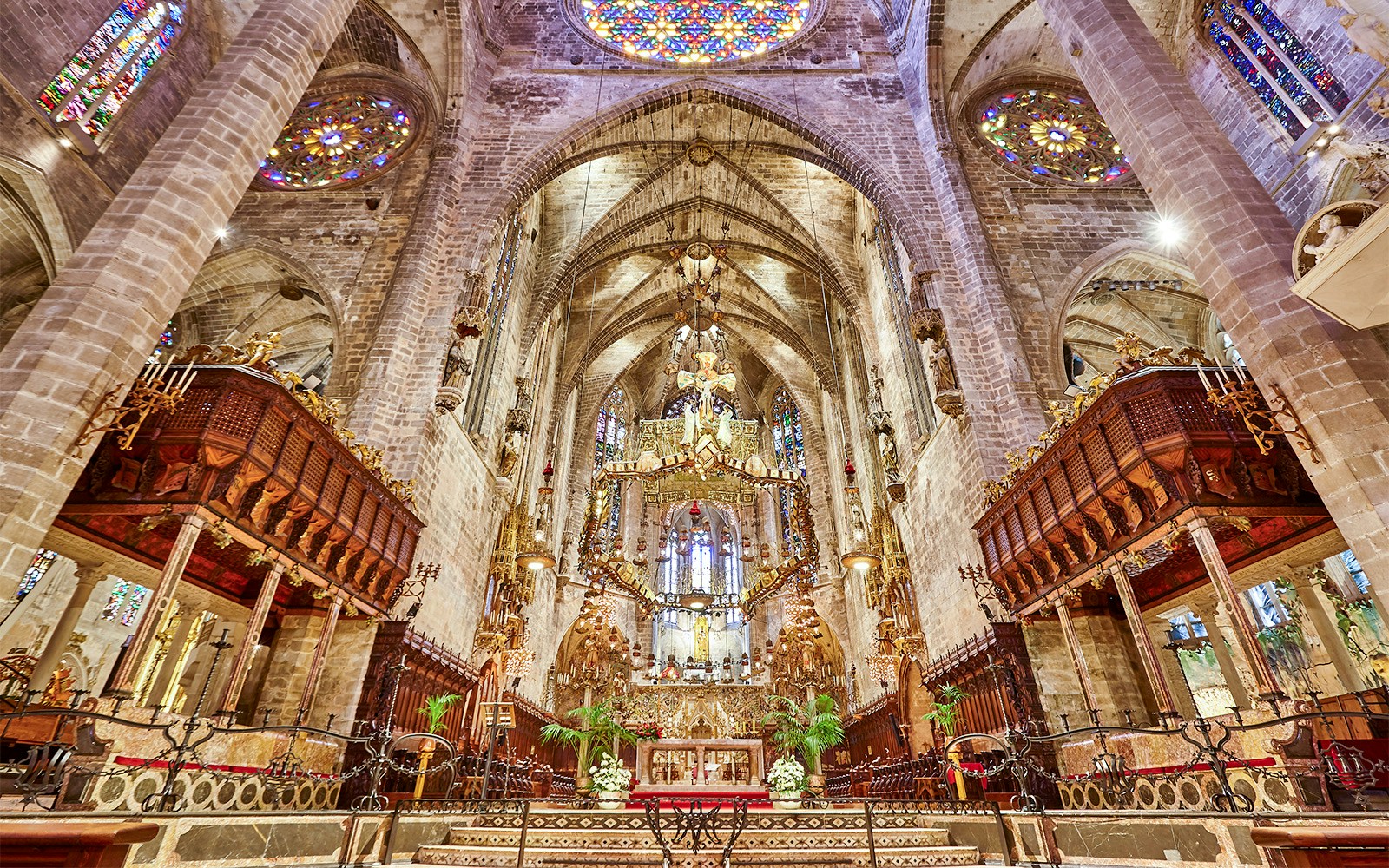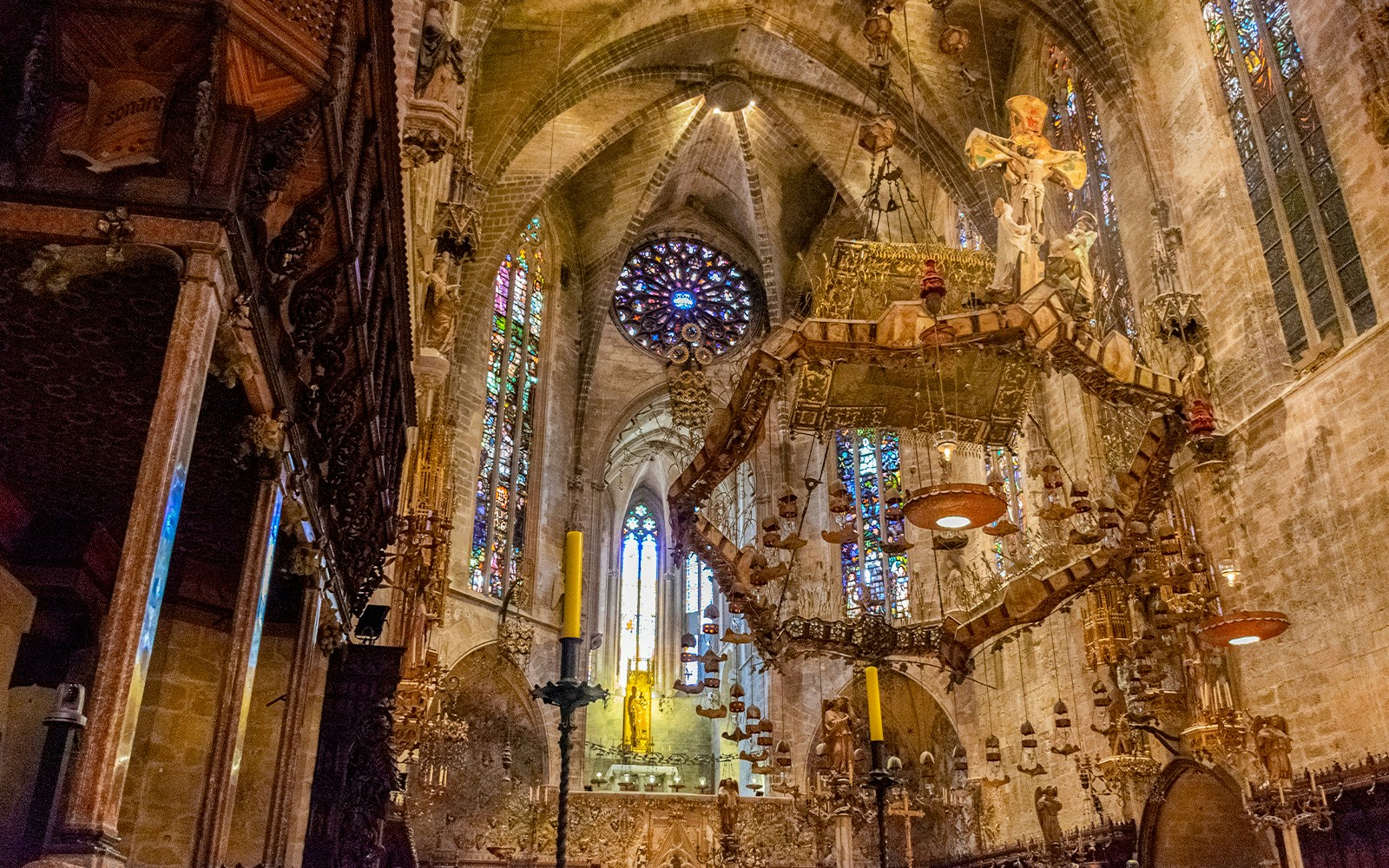The cathedral’s exterior makes extensive use of elements like flying buttresses and pinnacles, and both sides of the cathedral have been built in three ranks. The lowest includes the sacristy and the chapels, the second includes the two side naves, and the third is built enclosing the main nave. The facade on the west of the cathedral is built entirely in a French-inspired Neo-Gothic style.
Palma Cathedral History: A century-wise breakdown
13th Century: Foundations and early construction
Construction of the cathedral commenced in 1229, following the conquest of Mallorca by King James I of Aragon. It was built atop the site of a former mosque, symbolizing the island's transition from Islamic to Christian rule. The initial phase focused on establishing the foundational Gothic structure that would define the cathedral's grandeur.
14th Century: Gothic development
Throughout the 14th century, work continued on the cathedral's Gothic features. Significant progress was made in constructing the nave and side chapels, adhering to the Catalan Gothic style characterized by soaring arches and intricate stonework.
15th Century: Completion of the Old Work
By the end of the 15th century, the structural section known as the Old Work was completed. This included the areas up to the Mirador and Almoina portals. In 1498, the bell tower was finalized, housing nine bells, with the largest named Eloi.
16th Century: Choir enclosure and New Work
The early 16th century saw the commencement of the choir enclosure in the center of the main nave. In the 1570s, a decision was made to complete the cathedral's structure through the New Work, which involved constructing the final four sets of columns, the main façade, and the main portal. The entire cathedral was consecrated in 1601.
17th and 18th Centuries: Baroque enhancements
During these centuries, Baroque elements were introduced to the cathedral's interior, reflecting post-Tridentine spirituality. Notable additions included ornate altarpieces, paintings, and sculptures. Significant works from this period are the Corpus Christi altarpiece, the cloister, and the new chapterhouse.
19th Century: Restoration and Neo-Gothic facade
By the 19th century, the cathedral faced structural deterioration, exacerbated by an earthquake in 1851. A major restoration was undertaken by architect Juan Bautista Peyronnet, leading to the reconstruction of the main façade in a Neo-Gothic style, preserving the cathedral's historical integrity.
20th Century: Gaudí's intervention
Between 1904 and 1915, renowned architect Antoni Gaudí was commissioned to adapt the cathedral's interior to contemporary liturgical practices. His work included rearranging the choir, enhancing lighting, and introducing new furnishings, thereby revitalizing the cathedral's spiritual and aesthetic ambiance.
